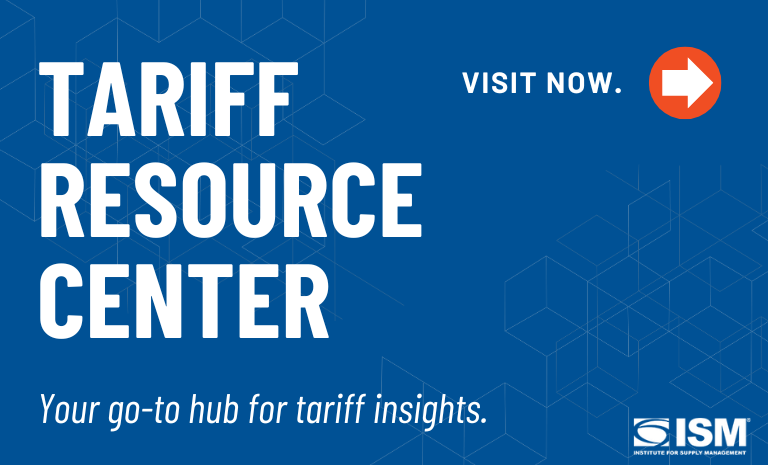Sustainability Success Starts With Employee Engagement

Even in these rapidly changing times, there is strong evidence that most people in developed economies are concerned about climate change and the environment.
Likewise, sustainability is important to employees — they have strong opinions about how they want their employers to invest in sustainability efforts and thus are an important stakeholder group. Engaging employees in those efforts can lead to better retention rates.
How do organizations engage employees in sustainability?
Engaging Employees and Customers in Sustainability: Strengthening Performance and Outcomes, a report by CAPS Research, the Tempe, Arizona-based organization in strategic partnership with Institute for Supply Management® (ISM®) and Arizona State University, examines some of the ways to get employees involved.
What Should Employees Understand?
First, employees need to understand the key aspects of sustainability that align with their roles and the organization’s overall environmental, social and governance (ESG) performance strategy. Where are companies directing their efforts, and what can employees do to support this approach? This includes everything from helping them understand sustainability to the company’s policies and focus.
Educating employees about sustainability is crucial for embedding sustainable practices within an organization. Effective training programs can enhance environmental performance and foster a culture of responsibility and innovation.
Some of the best ideas come from the bottom up. According to the Institute for Sustainability Studies in Dublin, Ireland, key areas for employee education include:
Energy optimization. Training on efficient energy use can significantly reduce consumption and costs. The training should include energy-saving practices relevant to the employee’s role.
Waste minimization. Educate employees on strategies to reduce waste generation, as well as promote recycling, reuse and effective management of all resources. A clear understanding of the principles of the circular economy is needed.
Sustainable resource management, including responsible sourcing and resource conservation.
Climate crises. Some employees don’t understand the core issues, like global warming and greenhouse gas (GHG) emissions, deforestation and biodiversity loss, sea level rise, and ocean acidification. Also important is the impact of the climate crisis on human health and the economy.
Scopes 1, 2 and 3 emissions. Supply chain GHG emissions are important but not visible and frequently not measured or understood. What are the material sources of emissions, who owns supply chain emissions, and how can they be reduced?
What Else Should Employees Know?
Procurement employees should know even more than the average employee because of the function’s close engagement with suppliers. In many industries, suppliers are the major source of Scope 3 emissions. As a result, employees must understand their company’s Scope 3 emissions goals as well as expectations for supplier GHG emission reduction.
Practitioners also should be aware of which suppliers have the greatest materiality in terms of their environmental impact and engage them in reducing the company’s GHG emissions and managing other material environmental issues. Some organizations have a strong emphasis on training suppliers about sustainability. Honda, for example, takes it a step further: All procurement employees are given access or required to complete the same sustainability training as suppliers.
Getting employees to learn the fundamentals of environmental sustainability is critical if they are to understand the issues and take meaningful action. Employers can’t implement metrics that employees don’t understand. If you ask employees to work with suppliers to influence the overall energy consumption of the business, they need the skills — that could entail specific training or the knowledge to refer the supplier to work with a separate sustainability group or consultant.
For example, most U.S. automotive OEMs are part of the Manufacture 2030 (M2030) software platform and refer suppliers to work with M2030 to reduce their environmental impacts and track their progress. Procurement needs to be aware that suppliers are engaged in this activity, and the impacts should be measured.
The same point holds regarding understanding and measuring waste reduction. Waste reduction is measurable and visible. Will the organization have individual metrics for waste reduction, and if so, how can an organization tie the supplier’s waste reduction effort to the level of individual contributors?
Organizations must decide on specific environmental metrics that every employee, including procurement, is held accountable for influencing. An incentive-based system could drive results. Companies need to establish a baseline and goal before employees will engage in the outcomes. Remember, employees want to be involved and be part of the solution.
Benefits of Sustainability Engagement
Suppliers will be more accepting of new initiatives when they come from procurement than other, unfamiliar groups within the organization because they have a pre-existing relationship. Procurement communicates requirements to the supply base, and meeting those requirements is associated with being qualified as a supplier to do business with the organization.
If an outside group begins to engage with suppliers, and those vendors are not already familiar with that group or have not been introduced to that group through the procurement function, there could be issues related to trust, potential conflict and setting priorities. Specific KPIs are required for both procurement and suppliers to provide clear goals and measure progress.
Engaging Employees and Customers in Sustainability: Strengthening Performance and Outcomes is available at CAPS Research’s online library. For more information, visit capsresearch.org.


